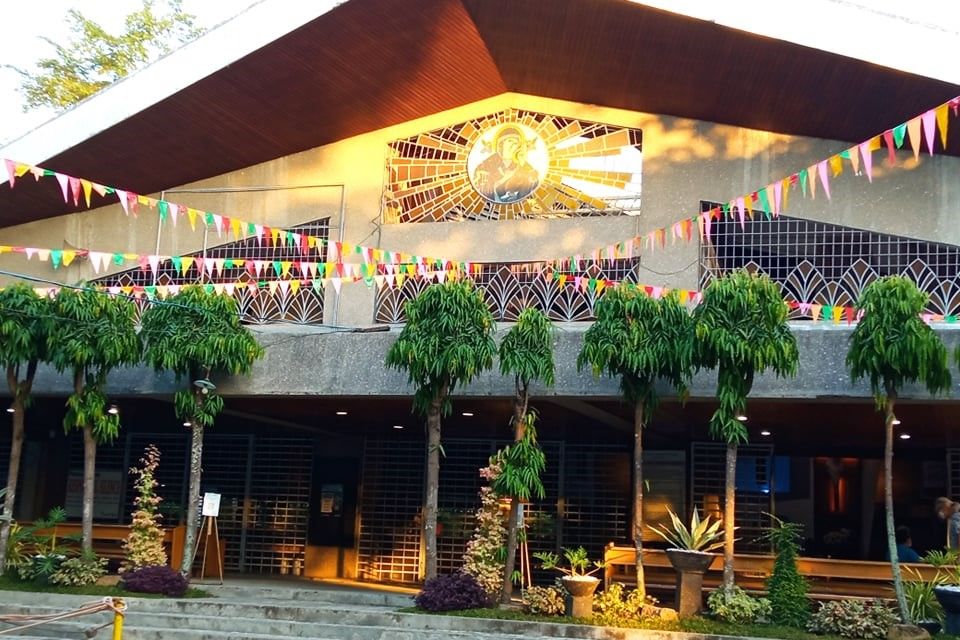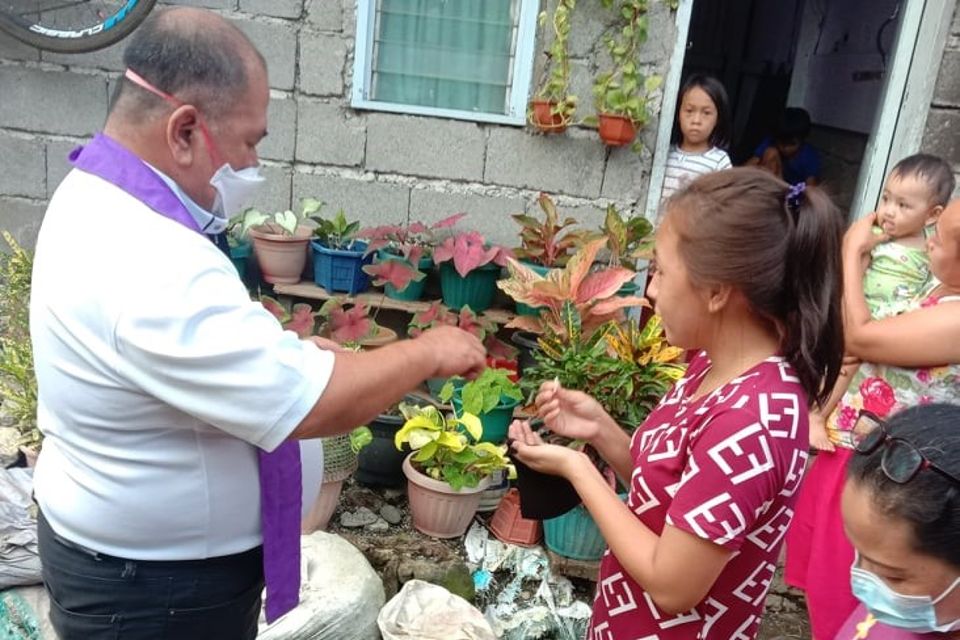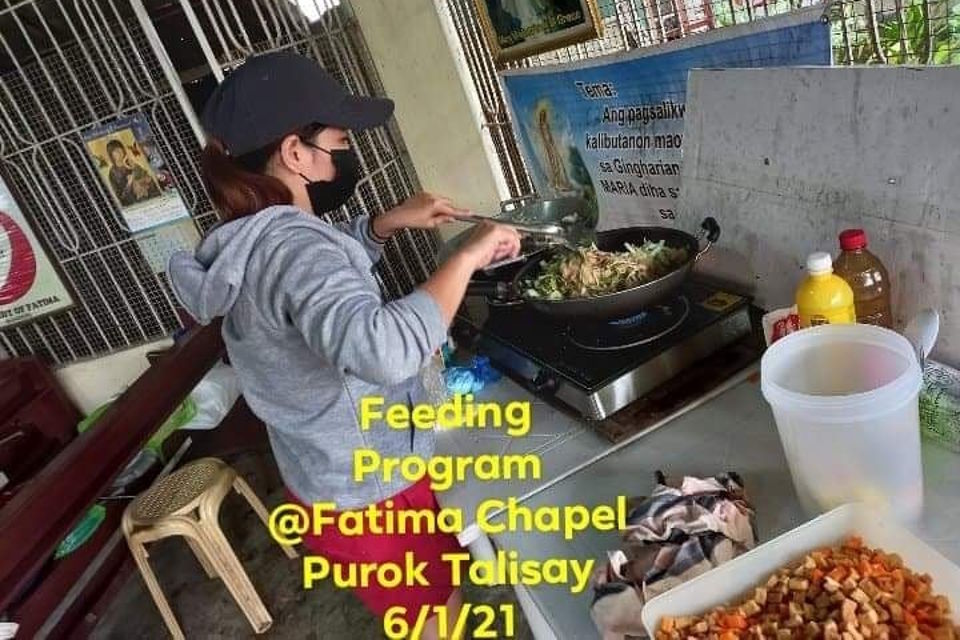 The frontage of Our Mother of Perpetual Help Parish Church
The frontage of Our Mother of Perpetual Help Parish Church
Our Mother of Perpetual Help Parish & the Redemptorists: Journeying with the Faithful in These Trying Times
As one travels to the northern part of Davao City and takes the commercial Bajada (now J.P. Laurel Avenue) road, one cannot help but appreciate the beautiful church of Our Mother of Perpetual Help Parish, popularly known as the Redemptorist Church. Bro. Karl Gaspar, CSsR shares the colorful history of the parish community with our readers.
“The Redemptorist missionaries’ presence in Davao City which led to the establishment of Our Mother of Perpetual Help Parish (OMPH) can be traced back to the setting up of the Redemptorist congregation in the Philippines which took place in March 1904. Their first foundation was in Mactan, Cebu composed of the mainly Irish priests and Brothers.
“Fifty years later, in 1952, a foundation was canonically accepted by the Father Superior General, but it was only three years later that the first community of Redemptorists arrived in Davao City. Temporarily, they stayed at the convent of the PME Fathers. They were tasked to administer the Assumption Church.
“A lot was then secured in what was then the outskirts of the city along Bajada in what is now J.P. Laurel St. Shortly after in June 1958, construction work began for the Mt. St. Mary’s monastery. A small church was built at the left side in front of the monastery where daily Masses were conducted.
“Even as the priority ministry of the Redemptorists is conducting missions in the isolated rural areas, nonetheless, they also decided to establish parishes in the cities. With the pastoral thrust of Building Christian Communities (Gagmay’ng Kristohanong Katilingban or GKK) following Vatican II’s vision of the Local Church, setting up parishes was seen as having permanent missions where they could get into the GKK on a long-term basis.
“The small church along Bajada served as the symbolic center of the parish; but by the 1980s, it became clear that this church was too small for the crowd frequenting the church for liturgical and sacramental purposes. Thus, a new building was constructed. As one blogger wrote: “Redemptorist Church gives you the automatic calm feeling the moment you step inside. This ambiance makes the people feel closer to God.” (animeaddictsite.blogspot.com).
“In 1986, part of the parish was taken over by the Archdiocesan Clergy and made into a parish called St. Mary’s Parish.
The setting up of the St. Alphonsus Theologate in 1987 which was later renamed St. Alphonsus Theological and Mission Institute (SATMI) has made possible the continuing assistance of theology students in the continuing work to consolidate the GKKs. This time, they are not just Filipino seminarians but also others coming from various parts of Asia.”
According to Fr. Cris Mostajo, CsSR, OMPH parish priest, like any other parishes here in Davao, their GKKs were very vibrant and leaders were very active in the various programs of the parish. However, with the outbreak of the Covid-19 pandemic, most of the parish programs were suspended because most of the lay leaders are elderly. The government also prohibited them to conduct community activities in the different GKKS. Aside from the suspension of parish activities, some of parishioners lost their jobs, other source of income and their loved ones.
Faced with these surmountable challenges, the parish team and the Redemptorist community made a prayerful discernment on how to respond to this crisis. “We recognized that we don’t have enough resources because at the start of the pandemic specially during the lockdown, we were not allowed to conduct public masses only live streaming and no love offering. But despite all these odds, we decided as a religious community that we should do something for our suffering people and must go out of our comfort zones“, Fr. Cris shares.
At the start of the lock down last year, the parish community started to distribute food packs to the poor GKKs in the parish and extended help to stranded workers and street dwellers. They also identified 30 poorest families in the parish who are in dire need (talagang walang-wala) and enrolled them in the weekly food for work program. Aside from this program, they also conducted feeding in every GKK once a week. With the coordination of Barangay health workers and after an evaluation, they now conduct feeding programs for the malnourished children in the parish twice a week for six months.
The counseling program in the parish – both face to face and online – is very relevant and needed. This intervention is appropriate especially for those having depression and suicidal ideation. Fr. Cris further shares that “this is an alarming sign that our people are losing hope and a sense of direction due to this pandemic.”
It is also providential that the parish will be celebrating its golden anniversary in 2022. Right now they are in the process of coming up with a comprehensive pastoral plan under the new normal. “Certainly this pandemic has changed the landscape of the world and our society that the old ways of doing things might not be applicable any more. Thus, the need to think of new ways of mission-evangelization under the new normal,” Fr. Cris, the parish priest, adds with optimism.
(The Davao Catholic Herald acknowledges the assistance of Fr. Crispin Mostajo, CSsR and Bro. Karl Gaspar, CSsR in the writing of this article)




No Comments